
Climate and Agriculture: Why Measuring from One Point in Time is Misleading
"Climate is always changing—but are we measuring it correctly?" This blog explores historical climate shifts, showing how past civilizations, agriculture, and landscapes have been shaped by natural warming and cooling cycles. From Viking farms in Greenland to the shrinking and greening of the Sahara, history proves that climate trends cannot be understood by measuring from one selective point in time. By looking at long-term patterns, rather than short-term comparisons, we uncover a more accurate picture of climate history—one that challenges modern narratives and provides deeper insight into the forces that have shaped our world for thousands of years.
Axel AI / Michael Bosworth
23 min read

Introduction
Climate discussions often focus on short-term trends, measuring from a single point in time to support particular narratives. However, history shows that climate is constantly changing, with natural cycles of warming and cooling that have shaped agriculture, civilizations, and global landscapes for thousands of years.
One of the best ways to understand these climate shifts is through agriculture—where crops have flourished and failed tells us a great deal about historical temperature changes. From the vineyards of Medieval Britain to Viking farms in Greenland, history provides clear evidence that natural climate fluctuations predate modern industrialization.
This report examines historical climate variability and highlights the flawed logic of measuring from selective timeframes to draw conclusions about modern climate trends. By looking at long-term patterns rather than isolated comparisons, we can better understand how climate change fits within the broader context of Earth’s history.
1. Vineyards in Britain: A Case of Historical Warmth
Medieval Warm Period (900–1300 AD)
Monasteries played a crucial role in viticulture. The Cistercian and Benedictine monks cultivated vineyards, and records from medieval England describe thriving vineyards in regions where today’s climate makes grape-growing difficult.
Historical Evidence:
Domesday Book (1086) lists 40+ vineyards in southern England.
King Henry II’s court (12th century) regularly consumed wine from English vineyards.
London’s St. Paul’s Cathedral managed a vineyard.
The medieval poem Piers Plowman (14th century) references English winemaking.
Why It Matters:
Climate was warm enough to support commercial wine production.
The decline of winemaking coincides with the onset of the Little Ice Age.
Modern English vineyards require new hybrid grape varieties that can tolerate cooler conditions.
Roman Warm Period (~250 BC – 400 AD)
The Romans expanded viticulture to Britain after their conquest.
Archaeological Discoveries:
Roman vineyards were found in Gloucestershire, Somerset, and even Yorkshire.
The ruins of Roman wineries show evidence of techniques similar to those used in Mediterranean vineyards.
Written records from Roman historians mention British wine production.
Why It Matters:
If one measured temperature change only from the Roman period to the Middle Ages, Britain would appear to have cooled dramatically before warming again.
2. Greenland’s Pastoral Farming Under the Norse
Erik the Red’s Settlement (~985 AD)
Historical Background: Erik the Red, an exiled Norseman, led settlers to Greenland and established farming communities. The name "Greenland" was partly a marketing ploy to attract more settlers, but archaeological and written records confirm that the land was habitable and supported agriculture.
Agriculture & Livelihood:
Norse settlers raised cattle, sheep, and goats.
Barley and other cold-resistant crops were cultivated.
Excavations at sites like Brattahlíð (Erik’s estate) show evidence of farmsteads, irrigation systems, and food storage.
Why This Matters:
This period was part of the Medieval Warm Period (900–1300 AD), which allowed farming at latitudes that would be impossible today.
The Norse survived for centuries, relying on agriculture and trade with Europe.
The very fact that the land could sustain permanent farming settlements indicates a significantly warmer climate than today.
Climate Shift & The Little Ice Age (~1300–1850 AD)
The onset of the Little Ice Age made farming increasingly difficult.
Indicators of Cooling:
Tree ring data and ice core samples show falling temperatures in the North Atlantic.
Written records describe worsening sea ice, colder summers, and shorter growing seasons.
The growing season became too short to sustain crops, leading to dependence on hunting and fishing.
Norse Abandonment of Greenland (~1400s–1500s)
The combination of harsher winters, loss of farming viability, and isolation from European trade led to the collapse of Norse Greenland.
Inuit populations, better adapted to Arctic survival, replaced the Norse as the dominant inhabitants of Greenland.
Present-Day Comparison
Today, Greenland’s ice sheet covers many former farmable areas, meaning those same farms would not be viable now.
Recent attempts at Greenland agriculture require new technologies (e.g., greenhouses, soil enhancement) that the Norse never needed.
If we only measured from the Little Ice Age to today, it would appear that Greenland is warming drastically. However, measured from the Medieval Warm Period, Greenland is still significantly colder than it once was.
Key Takeaways
Greenland was once warm enough to support pastoral farming for centuries.
Climate changes—not industrial emissions—forced the Norse to abandon their farms.
Selective comparisons can distort historical climate perspectives: measuring from a cold period (e.g., the Little Ice Age) to today makes modern warming seem extreme.
The reality is that Greenland was warmer before and has since cooled, despite fluctuations.
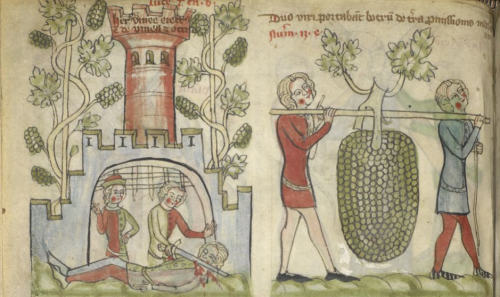

"Medieval wine-making scene, from Harley MS 4996, f. 24v. Courtesy of The British Library."
3. The Decline of European Farmland Due to Cooling
The Little Ice Age (1300–1850 AD)
The Little Ice Age was a period of significant cooling that severely impacted agriculture across Europe. This cooling period saw colder summers, harsher winters, and unpredictable growing seasons. Many once-thriving farmlands either became unproductive or experienced dramatically reduced yields.
Impact on Agriculture
Shorter Growing Seasons
Spring frosts persisted longer, delaying planting.
Summers were too cool for crops like wheat and barley to reach full maturity in certain regions.
Harvest failures became common, leading to increased grain prices and food shortages.
Famine and Starvation
Great Famine (1315–1317): Excessive rain and cold temperatures destroyed European crops, leading to widespread hunger.
French Wine Production Declined: Records from Burgundy show reduced harvests, indicating colder temperatures affected viticulture.
Danish and Scandinavian Farming Suffered: Settlements that had once produced surplus food struggled with repeated crop failures.
Evidence from Historical Events
The Thames River Freezing Over
The Thames froze solid multiple times during the Little Ice Age, allowing the famous Frost Fairs of London.
This indicates that winters were significantly colder than today, making certain types of farming impossible.
Advancing Alpine Glaciers
Villages in Switzerland and France were overtaken by expanding glaciers.
In Chamonix, France, advancing glaciers buried farmland, reducing agricultural output.
Abandoned Norse Settlements
In addition to Greenland’s Norse population, farming outposts in Iceland and Scandinavia also faced decline.
Iceland saw an increase in sea ice, preventing fishing and disrupting trade, forcing more reliance on poor-quality domestic crops.
Collapse of Farming-Based Economies
Swedish and Norwegian farmers migrated to find land with more stable growing conditions.
The Dutch relied more on imported grain as domestic production declined.
Russia and Eastern Europe became the new grain suppliers, benefiting from relatively stable climates compared to Western Europe.
Why This Matters Today
If one measured from the peak of the Little Ice Age to today, it would appear that extreme warming had occurred.
However, if we measured from the Medieval Warm Period to today, we would see that Europe is still recovering from an unusually cold era, rather than experiencing unprecedented heat.
Selective comparisons—starting from the coldest period (e.g., 1700) rather than the warmer periods before—misrepresent long-term climate trends.
Key Takeaways
The Little Ice Age drastically reduced Europe’s agricultural capacity, causing famine and economic hardship.
Major historical famines and crop failures coincided with cooler temperatures, not warming.
The modern recovery of farmland should be understood in the context of a return to earlier warm conditions rather than unprecedented climate change.


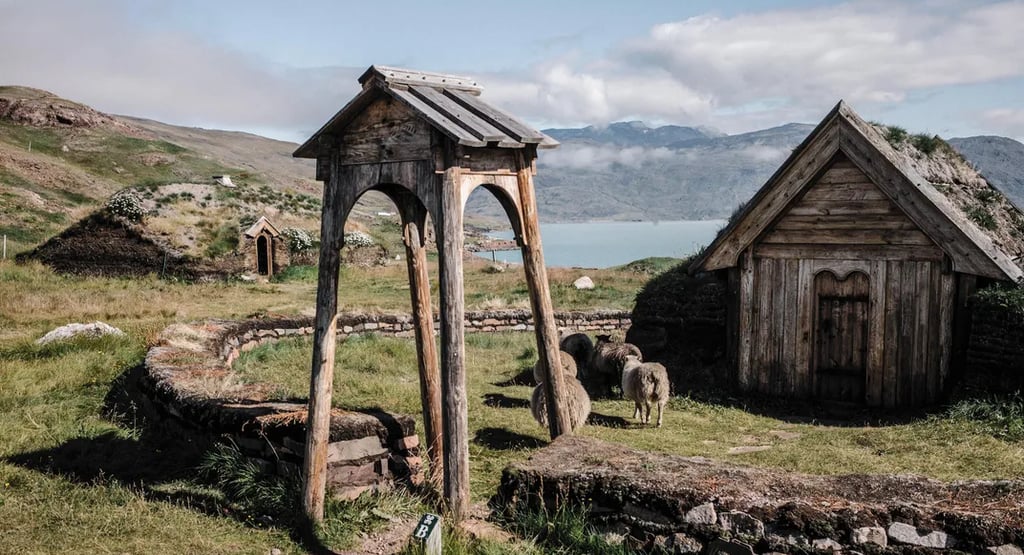

"Hvalsey Church, one of the last remnants of Norse settlements in Greenland."
"A reconstructed Viking longhouse and church in Qassiarsuk, marking the historical presence of Erik the Red."
4. The Sahara: From Fertile Land to Desert
The African Humid Period (~8000–3000 BC)
The Sahara Desert was once a thriving, fertile landscape with rivers, lakes, and vast grasslands. This period, known as the African Humid Period, was characterized by significantly higher rainfall, allowing for extensive agriculture and human settlements.
Evidence of a Green Sahara
Fossilized Lake Beds
Remnants of massive prehistoric lakes, such as Mega-Chad, which was once the size of the Caspian Sea.
Dry lake beds across North Africa indicate the presence of extensive water sources.
Rock Art Depictions
Ancient carvings in Tassili n’Ajjer (Algeria) and Gilf Kebir (Egypt) show hippos, crocodiles, and giraffes, species that require a lush environment.
Depictions of human herding and farming indicate that early Saharan inhabitants practiced agriculture.
Archaeological Discoveries
Excavations have uncovered grinding stones, storage pits, and irrigation systems, proving that early civilizations cultivated grains and raised livestock.
Climate Shift: The Sahara Transforms into a Desert (~3000 BC – 1000 AD)
Around 3000 BC, shifting monsoon patterns led to gradual desertification.
Rainfall declined, forcing populations to migrate to the Nile Valley, West Africa, and the Mediterranean.
By 1000 BC, much of the Sahara had transformed into the arid desert we recognize today.
The Misinterpretation of Climate Data
If we compared the Sahara from 5000 BC to today, it would suggest a catastrophic cooling and drying trend, ignoring the natural fluctuations in climate.
Conversely, if we only measured from the 1970s to today, we might conclude the opposite.
Both narratives are misleading because the Sahara has gone through cycles of greening and desertification for thousands of years.
Modern Perspective: The Sahara is Greening Again
Recent data shows that desertification in the Sahel region has slowed, and in some areas, vegetation has increased.
Satellite imagery (over the past 30–50 years) has documented an expansion of green pastureland in Mali, Niger, and Chad.
Rainfall patterns have partially recovered since the severe droughts of the 1970s and 1980s.
Evidence of a Greener Sahel
NASA satellite images confirm increased tree and shrub cover across parts of the Sahel.
African farmers report more arable land becoming available for cultivation in certain areas.
The Great Green Wall Initiative (led by the African Union) has helped reforest and restore soil fertility in key regions.
Why This Matters
If one measured from the peak of the Sahel droughts of the 1970s and 1980s to today, it would appear that global warming is reversing desertification, which is not the full picture.
However, measuring only from ancient times to today would suggest an unstoppable drying trend, ignoring the recent recovery of vegetation.
The reality is that the Sahara has always cycled between arid and green periods, and current greening trends align with these natural cycles.
Key Takeaways
The Sahara was once fertile, and agriculture thrived for thousands of years before desertification set in.
Recent decades have shown a slowdown in desertification, with greener landscapes emerging in parts of the Sahel.
Climate change discussions often overlook long-term patterns, instead focusing on selective timeframes that can misrepresent the bigger picture.
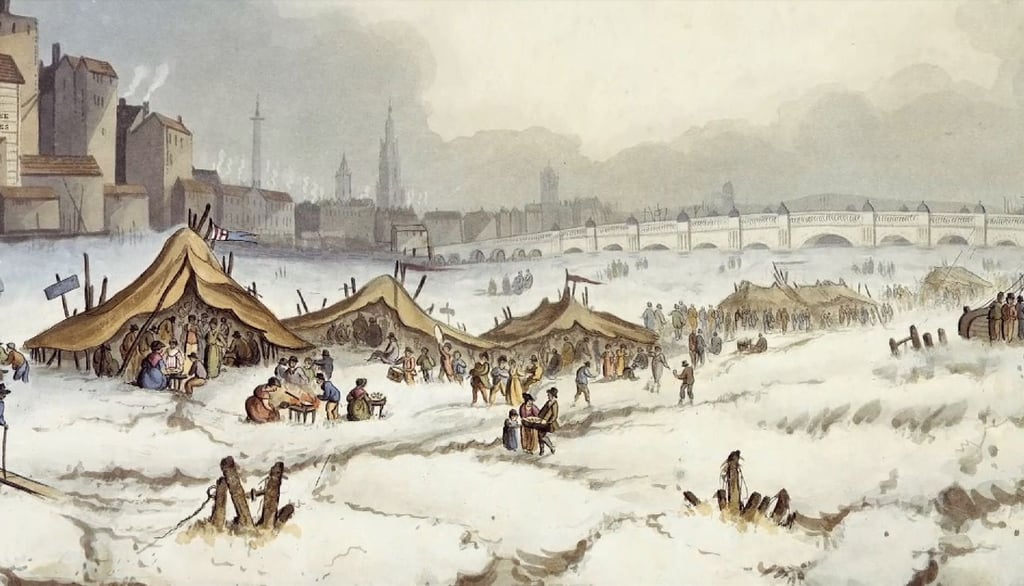

"During the Little Ice Age, the River Thames froze solid, allowing for famous Frost Fairs. Image: Museum of London."
6. Viking Farming in Iceland and Vinland (Canada)
Viking Expansion and Agricultural Success (~800–1100 AD)
The Norse Vikings were skilled seafarers and settlers who expanded across the North Atlantic during the Medieval Warm Period (900–1300 AD). This era of higher-than-average temperatures allowed them to farm in regions that would be too cold today, including Iceland and even parts of North America.
Farming in Iceland
Settlement of Iceland (~874 AD)
Viking settlers arrived in Iceland and established farms, growing barley and keeping livestock (cattle, sheep, and goats).
Written sources like the Íslendingabók (The Book of Icelanders) describe how early settlers successfully raised crops and livestock.
Climate Advantage
During the Medieval Warm Period, Iceland had a longer growing season than today.
Tree growth was more extensive, allowing for timber-based farming settlements rather than relying solely on driftwood and imports.
Climate Shift and Agricultural Decline (~1300 AD Onward)
As the Little Ice Age (1300–1850 AD) set in, colder temperatures shortened growing seasons, making grain cultivation nearly impossible.
Icelanders shifted from grain farming to a fishing-based economy, relying more on dried fish and imported grains.
The Norse in Vinland (North America) (~1000 AD)
L’Anse aux Meadows, Newfoundland
The Viking settlement at L’Anse aux Meadows (discovered in 1960) provides archaeological evidence that the Norse reached North America.
The site included structures for living quarters, workshops, and food storage.
Agricultural Viability
The Norse may have attempted grain farming or relied on local wild foods, such as berries, fish, and game.
The warmer climate during the Medieval Warm Period would have made temporary Norse settlements in North America feasible.
Why the Norse Left
The settlement lasted only a few years, likely due to conflicts with Indigenous peoples, difficulties sustaining agriculture, and logistical challenges.
Flawed Climate Comparisons and the Trap of Measuring From a Single Period
If we measured from the Norse period to today, it would seem that Iceland and parts of North America have drastically cooled.
However, if we only measured from the Little Ice Age to today, it would suggest that these regions are warming rapidly.
Neither conclusion alone is correct—the Viking Age was part of a natural climate cycle, with warming followed by cooling.
Modern Perspective: Lessons from Viking Agriculture
Icelandic Farming Today
Modern Iceland relies on geothermal greenhouses for crop production, a method that was unnecessary during the Medieval Warm Period.
Reforestation efforts aim to recover lost woodlands that thrived before the Little Ice Age.
Greenland’s Climate Today (Reference to Section 2)
Some regions of Greenland have seen recent agricultural resurgence, with small-scale potato and livestock farming returning.
However, Norse-style pastoral farming remains impossible in most areas that were once settled, showing that Greenland is still colder than it was 1,000 years ago.
Key Takeaways
The Vikings successfully farmed in Iceland and parts of North America during the Medieval Warm Period.
As the climate cooled during the Little Ice Age, farming became unsustainable, leading to settlement collapse.
Measuring only from the Little Ice Age to today exaggerates warming trends, while measuring from the Viking Age to today suggests extreme cooling—both are misleading.
Historical evidence shows that farming in these regions was once possible without modern technology, indicating that past warming was significant.
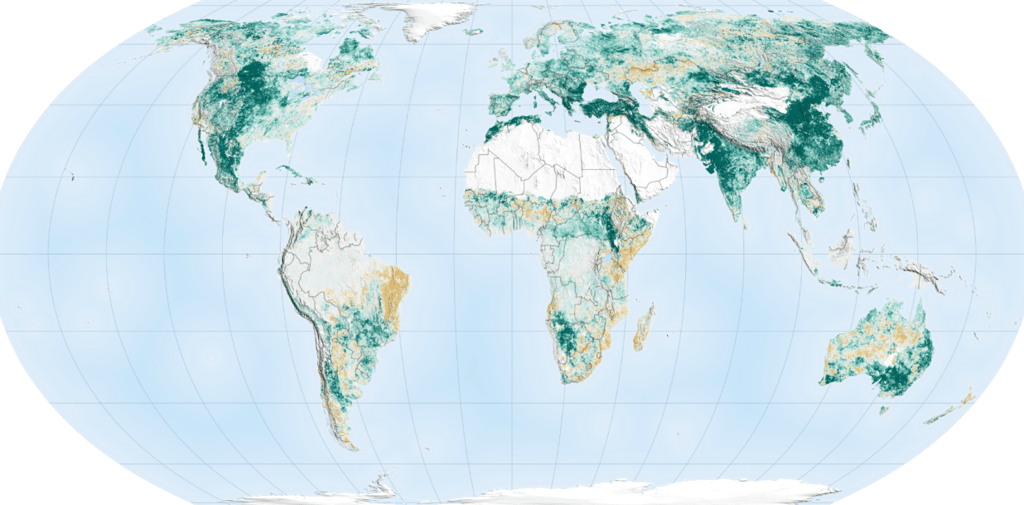

"NASA Earth Observatory data (2000–2017) shows increased foliage in green areas. Image by Joshua Stevens."
5. The Dust Bowl (1930s, USA): A Case of Regional Warming and Drought
What Was the Dust Bowl?
The Dust Bowl was a period of severe drought and dust storms that devastated the Great Plains region of the United States and Canada in the 1930s. It was one of the most extreme agricultural disasters in North American history, leading to widespread crop failures, economic hardship, and mass migration.
Causes of the Dust Bowl
Natural Climate Variability
The 1930s saw a prolonged drought cycle, with consecutive years of below-average rainfall.
Tree-ring analysis confirms that similar droughts had occurred in the past, including during the Medieval Warm Period (~900–1300 AD).
Human Factors
Unsustainable farming practices, such as deep plowing and removal of native prairie grasses, left the soil vulnerable to wind erosion.
Overgrazing by livestock and mechanized farming expansion led to rapid depletion of topsoil.
Strong Winds & Soil Erosion
The exposed, dry soil was easily carried away by strong winds, creating massive dust storms.
Storms like Black Sunday (April 14, 1935) turned the skies black, reaching as far as New York and Washington, D.C.
Impact on Agriculture
Crop Failures
Farmers lost entire fields of wheat, corn, and other staple crops.
Yields plummeted, and much of the soil became unsuitable for farming.
Livestock Deaths
Cattle and other farm animals perished due to dust inhalation and lack of forage.
Many farmers were forced to sell livestock at extreme losses.
Economic & Social Consequences
Over 2.5 million people were displaced, many migrating to California and other states in search of work.
Small farmers were often forced to abandon their land, leading to increased corporate farming.
Flawed Climate Comparisons: The Trap of Measuring From One Event
If one measured from the peak of the Dust Bowl (1935) to today, it would appear that North America has cooled and become wetter.
However, if measured from pre-Dust Bowl conditions to today, it might appear that the region is experiencing more extreme warming and drying.
Neither comparison is fully accurate—the Dust Bowl was an extreme but temporary regional event, not a global climate indicator.
Historical Context: Similar Droughts in the Past
Medieval Warm Period (900–1300 AD)
North America experienced megadroughts, with some lasting over 100 years.
The Ancestral Puebloans (Anasazi) abandoned major settlements like Mesa Verde due to prolonged drought.
19th Century Droughts (1850s–1860s)
Before the Dust Bowl, severe droughts hit the western U.S., disrupting early farming settlements.
Droughts After the Dust Bowl
The U.S. has experienced multiple major droughts since the 1930s, including the 1950s drought, the 1988 drought, and the 2012–2013 Midwest drought.
Each drought was framed differently depending on the timeframe from which it was measured.
Modern Perspective: Lessons from the Dust Bowl
Agricultural Adaptation
Modern soil conservation techniques, such as crop rotation, no-till farming, and windbreaks, have reduced erosion risk.
Government policies (e.g., the Soil Conservation Act of 1935) helped restore farmland health.
Climate & Weather Patterns
The Great Plains remain vulnerable to periodic drought cycles, but better land management has mitigated large-scale disasters.
Misuse of Climate Data
Selectively comparing climate trends from one extreme event (the Dust Bowl) to today can distort broader climate patterns.
A more accurate approach considers long-term variability rather than single events.
Key Takeaways
The Dust Bowl was caused by both natural climate cycles and poor land management.
If measured from the 1930s, it would appear the region has cooled—but that ignores larger climate cycles.
Historical evidence shows that megadroughts have occurred for thousands of years, independent of modern industrial activity.
Improved agricultural practices have helped prevent another Dust Bowl-scale disaster, demonstrating human adaptability.
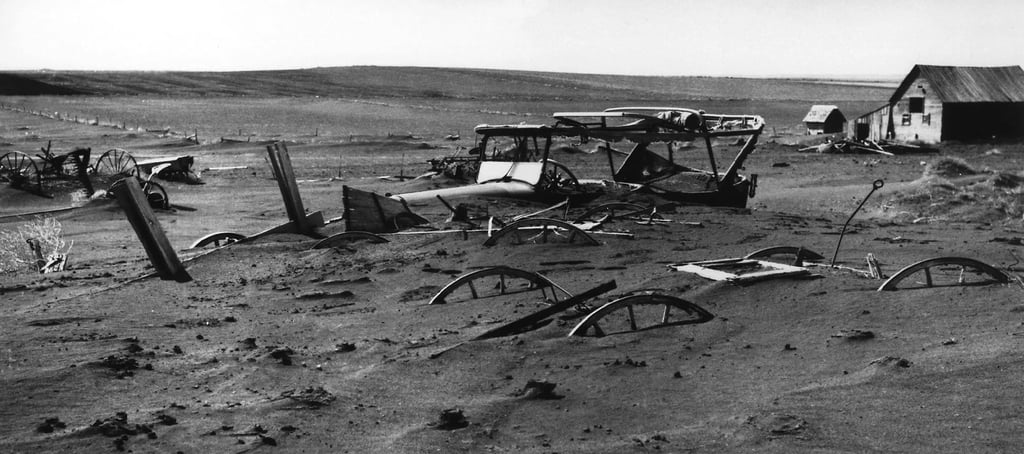

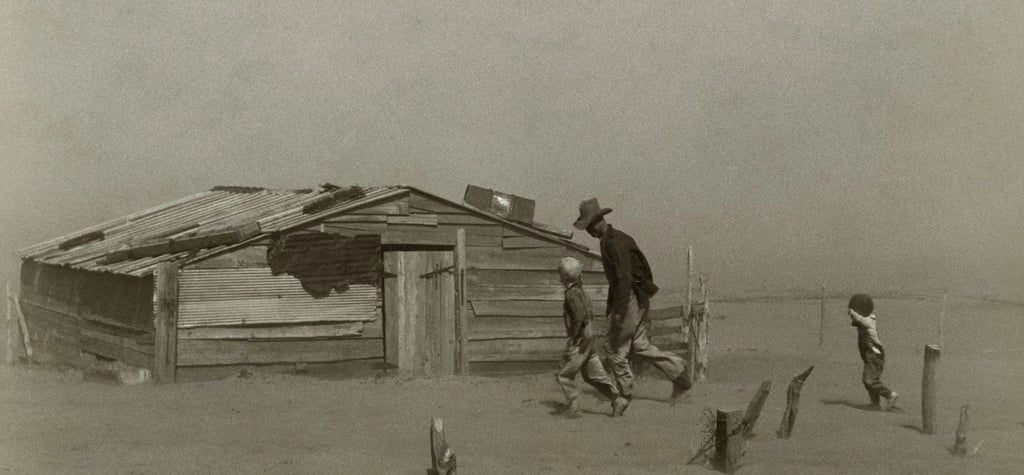

"A farmer battles through a dust storm during the Dust Bowl. Stock photo: Canadian Library."
"Aftermath of the Dust Bowl—once the dust settles, the damage to farmland is revealed. Stock photo: Canadian Library."
7. Modern Scandinavia and Ice Bounce Effects
What is Ice Bounce (Post-Glacial Rebound)?
Post-glacial rebound, also called isostatic rebound or ice bounce, refers to the gradual uplift of land that was once compressed under massive ice sheets during the last Ice Age.
As glaciers melted over the past 10,000–15,000 years, the weight of the ice was lifted, and the land underneath began slowly rising back to its natural level.
This effect is most pronounced in Scandinavia, Canada, and parts of northern Europe, where the thickest ice sheets once existed.
How Ice Bounce Affects Agriculture
Changes in Soil and Drainage Patterns
As land rises unevenly, it alters the natural drainage of water.
Former coastal areas have become elevated, leading to new land formations that affect farming viability.
Some areas that were once fertile marshlands have become too dry for traditional farming.
Shifting Agricultural Boundaries
In regions like Sweden and Finland, previously coastal farmlands are now further inland, affecting water availability and soil composition.
The Gulf of Bothnia (between Sweden and Finland) is slowly shrinking, as land continues to rise, reducing the coastline.
Salinization and Loss of Arable Land
As land rises above sea level, salt deposits from ancient coastlines remain in the soil, affecting crop growth.
Some traditional agricultural regions in Norway, Sweden, and Finland have struggled with soil salinity, forcing farmers to adopt new methods or move to different areas.
Newly Exposed Land Becoming Farmable
In contrast, some newly uplifted land has become suitable for agriculture, as fresh sediment from lakes and rivers enriches the soil.
Examples:
Swedish farmers have reclaimed some former seabed areas for growing crops.
Finnish peatlands, previously submerged, have become valuable grazing land.
Flawed Climate Comparisons: The Trap of Measuring from a Fixed Point
If one measured from medieval times to today, some areas of Scandinavia appear to have lost farmland, leading to assumptions of climate cooling.
If one measured only from the 20th century onward, the warming trend might suggest that land is becoming more suitable for agriculture—when in reality, much of this is due to post-glacial uplift, not temperature changes.
Neither perspective alone is accurate—land rising due to ice bounce is a geological factor, not a direct consequence of climate trends.
Modern Perspective: The Adaptation of Scandinavian Agriculture
Farming Techniques Have Evolved
Soil management and irrigation have helped counteract water drainage issues caused by land uplift.
In regions where salinity is a problem, farmers now use crop rotation and soil treatments to maintain yields.
New Crops and Warmer Growing Seasons
Scandinavia is experiencing slightly longer growing seasons, which, combined with ice bounce, has allowed for expansion of certain crops.
Vineyards in Sweden: Grapes, once impossible to cultivate, are now growing in some parts of southern Sweden.
Barley and wheat production have expanded in northern Finland, where previously shorter summers made grain farming difficult.
Maritime Infrastructure Challenges
Ice bounce is affecting harbors and coastal cities, forcing some ports in Sweden and Finland to relocate due to changing water levels.
Key Takeaways
Scandinavia’s changing farmland is influenced by ice bounce as much as by climate trends.
Land uplift has altered water drainage, soil composition, and agricultural suitability over time.
Some areas have become less farmable due to salinity and drying, while others have benefited from newly exposed land.
Measuring only from one period (medieval times or the 20th century) leads to misleading conclusions about temperature trends.
8. Alpine Glacier Retreat and Lost Farmland
Glacial Cycles and Agriculture in the Alps
The Alps have experienced multiple glacial advance and retreat cycles over thousands of years. These changes have dramatically affected farmland availability, settlements, and agriculture in the region. While modern narratives often focus on recent glacier retreat due to warming, historical records show that glaciers have repeatedly expanded and contracted over time, sometimes wiping out entire villages and farms.
Historical Evidence of Farming in the Alps Before Glacial Advances
Ötzi the Iceman (~3300 BC)
The discovery of Ötzi the Iceman in 1991, preserved in a glacier, suggests that the area was once free of ice and habitable.
Analysis of his belongings shows he came from a farming community, proving that agriculture once existed at high altitudes where glaciers later formed.
Roman Warm Period (~250 BC – 400 AD)
The Romans expanded vineyards and farmlands into what are now high-altitude regions of France, Switzerland, and northern Italy.
Roman agricultural settlements existed at elevations where permafrost and glaciers later made farming impossible.
Ancient Roman roads and trade routes through the Alps (such as the Great St. Bernard Pass) indicate that the region was warmer and more accessible than it was during the Little Ice Age.
The Little Ice Age (~1300–1850 AD): The Destruction of Alpine Farmland
During the Little Ice Age, Alpine glaciers expanded significantly, consuming farmland and forcing communities to adapt or relocate.
Swiss Villages Lost to Ice
Records from Swiss and French monasteries document entire villages and farmsteads being overtaken by glaciers.
The Mer de Glace (Sea of Ice) glacier in France expanded so much that it destroyed cultivated land.
The village of Gaspard in the Rhône Valley was abandoned as a glacier overtook it.
Shorter Growing Seasons and Crop Failures
Alpine regions suffered from colder summers, shortened growing seasons, and increased rainfall, leading to repeated crop failures.
Farmers who once cultivated grains and vineyards at high elevations had to move downslope to find viable farmland.
Religious and Social Responses
As glaciers encroached on farmland, villagers held religious processions to "ward off" the advancing ice, showing how glacial expansion was seen as a major crisis.
Church records document prayers and rituals to "stop the glaciers" from advancing into settlements.
Modern Perspective: Misinterpretation of Glacial Retreat
If one only measures from the peak of the Little Ice Age (~1700 AD) to today, it appears that Alpine glaciers are retreating dramatically due to warming.
However, if we measure from the Roman Warm Period (~250 BC) to today, we see that glaciers have advanced and retreated multiple times, with cycles of warming and cooling.
Some glacial retreat today is part of a long-term trend rather than a new, human-driven event.
Farming in the Alps Today: A Partial Recovery
Return of Vineyards and High-Altitude Farming
With slightly warmer temperatures since the 19th century, grape farming has returned to some high-altitude areas in France, Switzerland, and northern Italy.
Cereal crops like barley and wheat are once again being grown at higher elevations than was possible during the Little Ice Age.
Glacial Retreat Exposing Lost Farmland
As glaciers retreat, remnants of old farms, roads, and structures buried under ice for centuries are re-emerging.
Archaeological sites from the Medieval Warm Period (~900–1300 AD) are being uncovered, proving that farming once extended further into Alpine regions than during the Little Ice Age.
Key Takeaways
Alpine farming thrived in warmer periods, but glacial advances repeatedly destroyed farmland.
The Little Ice Age (~1300–1850 AD) caused significant agricultural losses due to glacial expansion.
If we measure only from the Little Ice Age to today, it appears that glaciers are vanishing—when in reality, they have always fluctuated.
Historical records show that some of today’s “newly ice-free” farmland was cultivated before being buried by advancing glaciers.
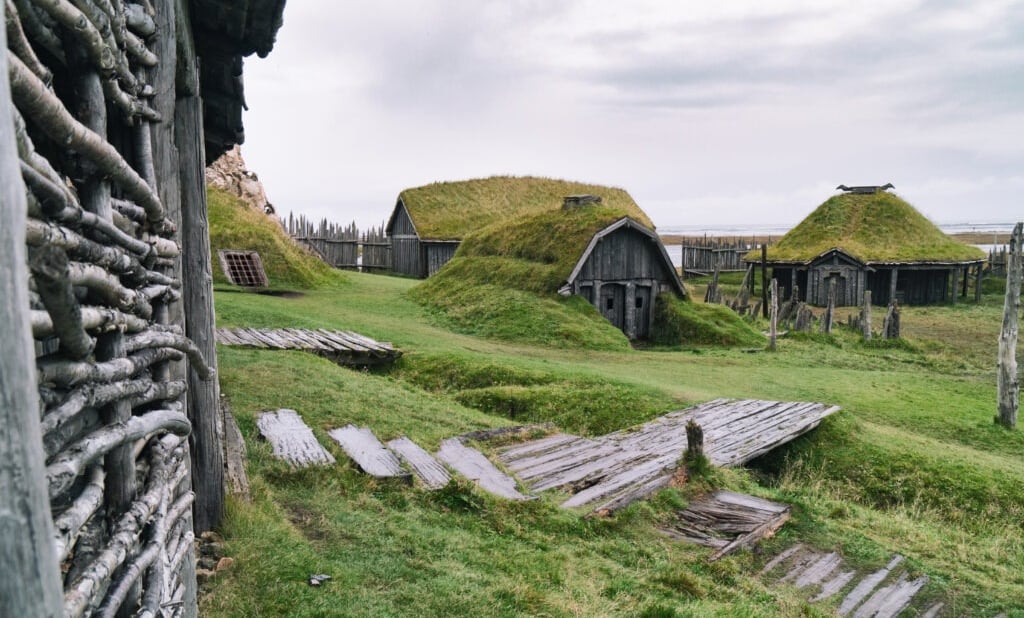

"A traditional Viking village near Vestrahorn, Iceland, showcasing old wooden structures from Norse history. Stock image."
9. 18th-19th Century Arctic Expeditions & Ice Variability
The Myth of a Constantly Frozen Arctic
The Arctic is often portrayed as a permanently ice-covered region that has only recently started to thaw due to modern climate change. However, historical records from the 18th and 19th centuries show significant natural fluctuations in Arctic ice coverage, with periods of open water and navigable passages recorded long before industrialization.
Historical Evidence of Arctic Ice Variabilit
18th–19th Century Arctic Exploration
During the Age of Exploration, European and North American expeditions sought new trade routes through the Arctic. Their logs reveal large variations in sea ice levels, proving that Arctic ice has never been stable over long periods.
Henry Ellis Expedition (1746–1747)
British explorer Henry Ellis reported open waters in parts of Hudson Bay that are often ice-covered today.
His records contradict the assumption that Arctic ice levels remained consistently high before modern times.
William Scoresby (1817)
Arctic whaler and explorer William Scoresby documented large sections of the Greenland coast that were ice-free, allowing for easier navigation.
His writings noted that in some years, Arctic waters were more open than expected, and in other years, sea ice expanded significantly.
British Royal Navy Reports (1800s)
The Royal Navy’s Arctic expeditions of the 19th century describe fluctuating ice conditions, with some voyages encountering unexpectedly open waters, while others were trapped by early ice expansion.
These records suggest that the Arctic has naturally alternated between more open and more frozen conditions.
The 1817 Report to the British Admiralty
One of the most compelling pieces of evidence for historical Arctic ice variability comes from an official British Admiralty report in 1817, which stated:
“The Arctic ice is in an unprecedented state of retreat.”
This report indicates that the Arctic experienced a period of significant ice loss more than 200 years ago, long before industrial greenhouse gas emissions were a factor.
If we measured Arctic ice levels only from 1817 to today, it would suggest that Arctic ice had been recovering for much of the 19th and 20th centuries before declining again.
This proves that selective timeframes can create misleading narratives about Arctic ice trends.
Arctic Whaling Records and Ice-Free Routes
Whaling logs from the 17th–19th centuries show that Arctic waters were sometimes free of ice in regions that are often frozen today.
Whalers reported varying ice conditions year to year, confirming that the Arctic has always undergone natural fluctuations.
Some whaling routes that were accessible in the 1800s became impassable during the Little Ice Age, further proving that Arctic ice levels were not fixed.
Flawed Climate Comparisons: The Trap of Measuring From a Single Period
If we only measured Arctic ice loss from the late 1800s to today, it would appear that modern warming is causing ice to decline at an extreme rate.
However, if we measured from 1817 (when Arctic ice was also retreating) to today, it would suggest that Arctic ice has naturally fluctuated for centuries.
Neither narrative is entirely accurate—historical records confirm natural cycles of Arctic ice expansion and retreat long before modern climate change discussions began.
Modern Perspective: The Reality of Arctic Ice Cycles
Arctic ice levels have always fluctuated, with periods of natural melting and refreezing occurring long before the Industrial Revolution.
Historical exploration and whaling records confirm that the Arctic was ice-free in some regions at times when modern models assume it should have been permanently frozen.
Measuring from a specific timeframe, such as the 1970s (a cold period) to today, exaggerates the perception of modern Arctic warming trends.
Key Takeaways
The Arctic has never had a fixed amount of ice—records from the 18th and 19th centuries show natural variability.
British Navy reports from 1817 confirm a major Arctic ice retreat more than 200 years ago.
Whaling logs and explorer journals show that Arctic waters were navigable in some years and frozen in others.
Measuring from selective periods (such as the late 1800s or the 1970s) can distort our understanding of long-term Arctic climate trends.
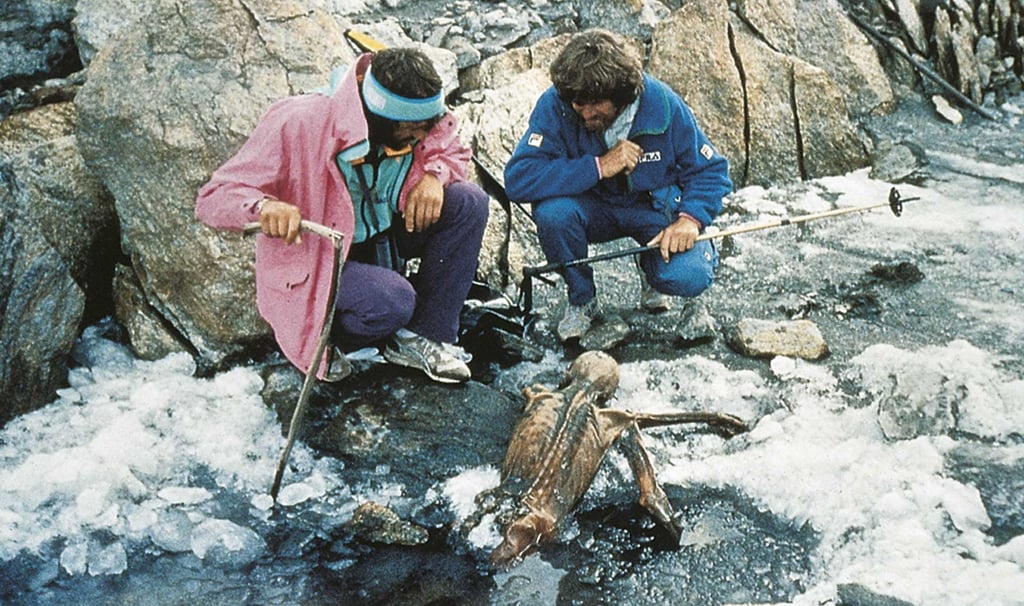

"Ötzi the Iceman, Europe’s oldest natural mummy, discovered frozen in the Alps. Library image."
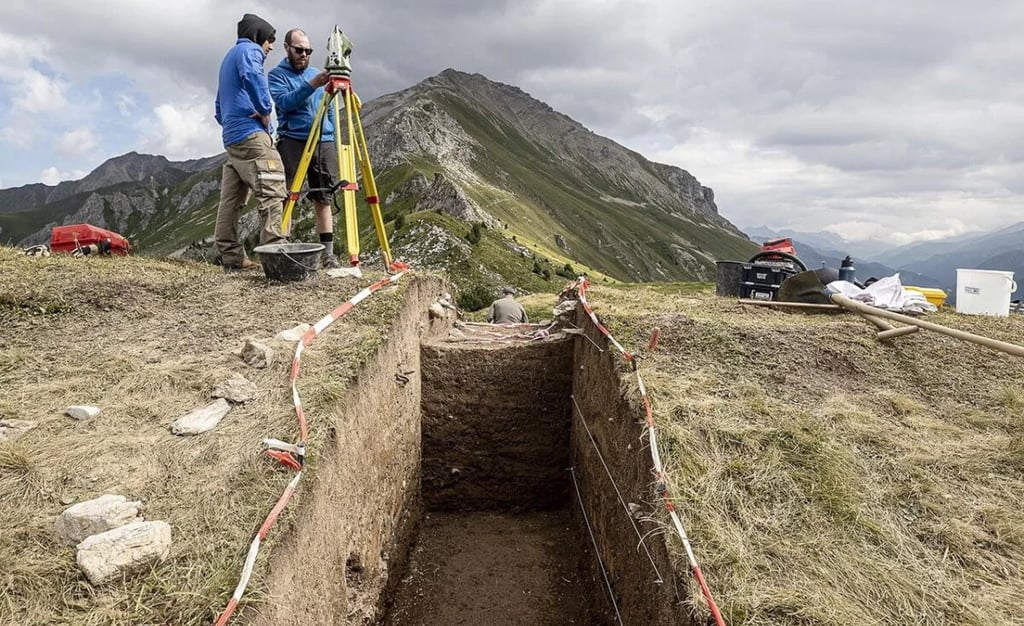

"Archaeologists uncover Roman camp in the Swiss Alps, revealing evidence of ancient settlements. Credit: Andrea Badrutt / Chur."
10. The Effects of Climate on Ancient Civilizations
Climate as a Factor in Civilization Collapse
Throughout history, major civilizations have risen and fallen due to climate shifts affecting agriculture, water supply, and societal stability. While modern discussions often focus on recent climate changes, historical evidence shows that natural climate fluctuations have repeatedly caused droughts, food shortages, and mass migrations—long before industrialization.
The Mayan Civilization (~800–900 AD): A Society Brought Down by Drought
The Maya thrived for over a thousand years in Mesoamerica, building vast cities and complex agricultural systems.
Their collapse around 900 AD coincided with prolonged droughts, supported by:
Sediment core samples from lakes showing extreme dry periods.
Tree ring data confirming prolonged lack of rainfall.
Abandoned cities such as Tikal and Copán, which were once thriving.
Why This Matters:
If measured only from the peak of the Mayan civilization to today, one could argue that global climate change has become more stable.
However, if we measured only from their collapse to today, it might suggest an extreme warming trend.
Both are misleading—climate shifts have always occurred, and past civilizations had no industrial activity to blame for them.
The Collapse of the Akkadian Empire (~2200 BC): The First Climate-Driven Mass Migration?
The Akkadian Empire, one of the world’s first major civilizations, ruled much of Mesopotamia (modern Iraq and Syria).
Around 2200 BC, severe droughts struck, leading to:
Crop failures and famine, forcing populations to migrate.
The abandonment of cities like Akkad, as people sought food and water elsewhere.
Dust storms and desertification, confirmed by sediment and ice core data.
Why This Matters:
If we measured only from 2200 BC to today, it would suggest that the climate has warmed and stabilized.
If we measured from a cooler period within that timeframe, it could indicate a misleading long-term warming trend.
The reality is that climate shifts have always impacted human civilizations.
The Indus Valley Civilization (~1900 BC): Vanishing Rivers and Abandoned Cities
One of the earliest urban societies, the Indus Valley Civilization (modern India and Pakistan) declined around 1900 BC.
Likely causes of collapse:
The Saraswati River, once a major water source, dried up due to shifting monsoon patterns.
Archaeological evidence of droughts and declining water supply in major cities like Mohenjo-Daro.
Populations were forced to migrate, leading to the dispersal of the civilization.
Why This Matters:
If measured only from this arid period to today, it could suggest an extreme warming trend.
However, geological evidence shows natural monsoon shifts have occurred over thousands of years, shaping South Asia’s climate cycles.
The Roman Warm Period (~250 BC – 400 AD): Agricultural Prosperity and Expansion
The Roman Empire flourished during a warm climate phase, allowing for:
Increased agricultural yields, supporting a growing population.
Expansion into northern Europe, where Romans introduced viticulture and grain farming.
Higher rainfall and stable temperatures, benefiting Mediterranean economies.
Why This Matters:
If measured only from this period to today, one might conclude that cooling destroyed Rome.
If measured from the Little Ice Age to today, it would appear as though we are in an extreme warming period.
Flawed Climate Comparisons and the Trap of Measuring From Selective Timeframes
If we only measured climate changes from the fall of a civilization to today, it might suggest an extreme long-term warming trend.
However, if we measured from a peak agricultural period to today, it could misleadingly suggest cooling trends leading to civilization decline.
The reality is that natural climate fluctuations have always shaped human history, long before modern industrial influences.
Modern Perspective: Climate Change and Society Today
History shows that climate shifts have led to mass migrations, economic collapses, and the restructuring of societies.
The modern world is more resilient due to technology, irrigation, and global food networks, but historical climate-driven collapses prove that extreme climate variability is not a new phenomenon.
Selective comparisons (e.g., measuring from a peak civilization collapse to today) can distort our understanding of long-term climate patterns.
Key Takeaways
The collapse of past civilizations (Maya, Akkadian, Indus Valley) was strongly linked to climate shifts.
The Roman Warm Period provided agricultural stability, but later cooling impacted food production.
If measured from selective timeframes (e.g., a civilization collapse), climate trends can appear misleadingly extreme.
Long-term climate variability has always existed, shaping human history well before modern industrialization.
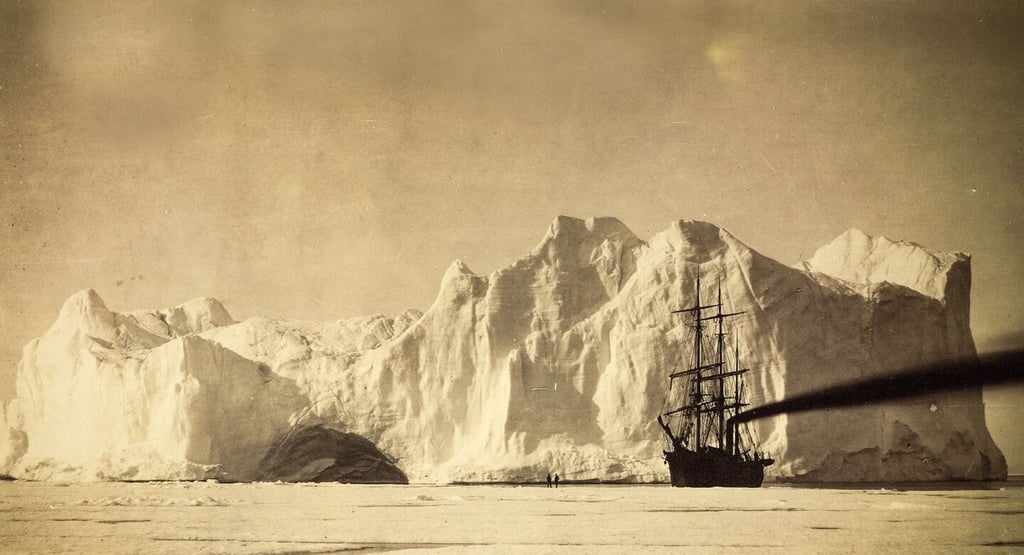

"A boat navigates near an iceberg, capturing the challenges of early North Pole expeditions. Credit: National Geographic."
Conclusion: The Danger of Selective Climate Comparisons
Throughout history, climate has never been static—it has shifted naturally over centuries and millennia, affecting agriculture, civilizations, and the very landscapes we inhabit. By examining historical climate variability, we see clear evidence that warming and cooling cycles have shaped human development long before the industrial era.
However, modern discussions often cherry-pick specific timeframes to support particular narratives about climate trends. This selective comparison leads to misinterpretations of long-term climate history.
Key Lessons from Historical Climate Data
Agricultural Success and Failure Were Climate-Dependent
Warmer periods, such as the Medieval Warm Period and Roman Warm Period, enabled vineyards in Britain, Viking farming in Greenland, and expanded agriculture in Europe.
Cooler periods, such as the Little Ice Age, caused farming losses, shorter growing seasons, and food shortages.
Natural Climate Variability Precedes Industrialization
The Sahara Desert was once green and habitable, proving that long-term shifts happen with or without human intervention.
The Arctic has experienced ice retreat and expansion cycles, with 18th–19th century explorers documenting fluctuating ice conditions.
Civilizations Have Risen and Fallen Due to Climate Shifts
The Mayan and Akkadian empires collapsed due to drought, not modern industrial activity.
The Roman Empire expanded during a warm phase but later struggled with cooler conditions.
Measuring From a Single Point in Time Can Be Misleading
Measuring from the Little Ice Age (1300–1850 AD) to today exaggerates modern warming trends.
Measuring from warmer ancient periods to today can suggest long-term cooling trends, which are equally misleading.
Why This Matters Today
Modern climate trends should be analyzed within the context of long-term historical patterns.
Short-term comparisons (e.g., from the 1800s to today) create exaggerated narratives of extreme warming.
Long-term climate fluctuations demonstrate that natural shifts—not just human activity—have shaped past climate trends.
While human impact on climate remains an area of study, history shows that focusing only on recent trends without considering broader historical patterns leads to incomplete conclusions.
By taking a long-term view of climate history, we gain a clearer, more accurate understanding of how the Earth’s climate has evolved—and why measuring from a single point in time is not evidence of unprecedented change.
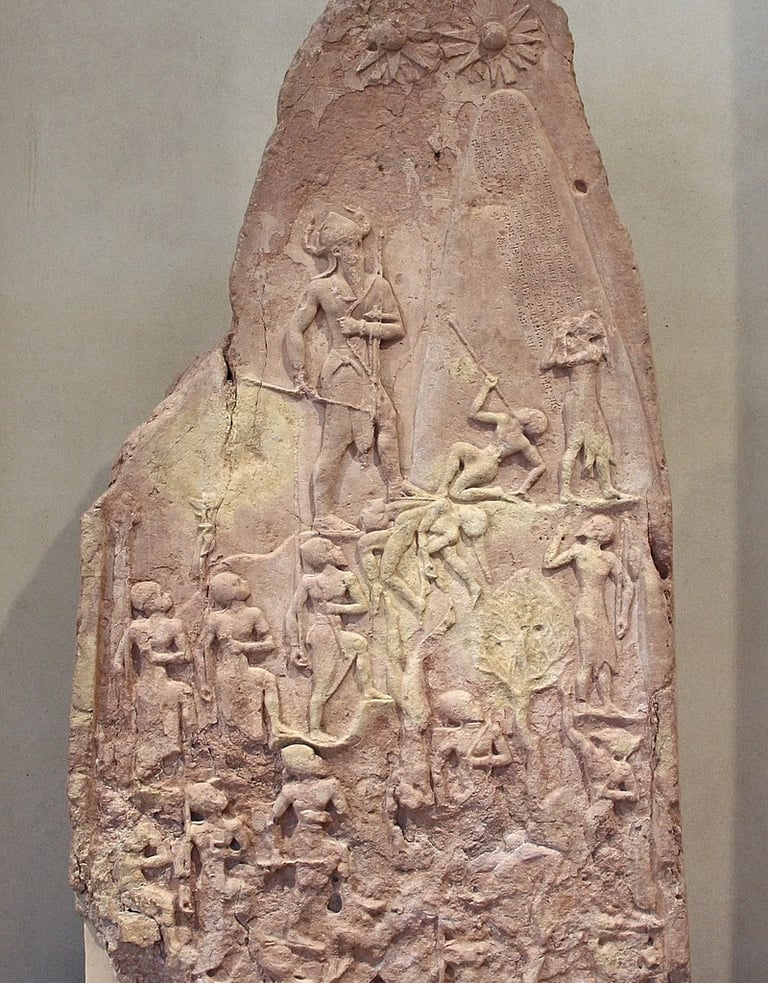

"King Naram-Sin of Akkad, grandson of Sargon. Credit: Louvre/Rama."
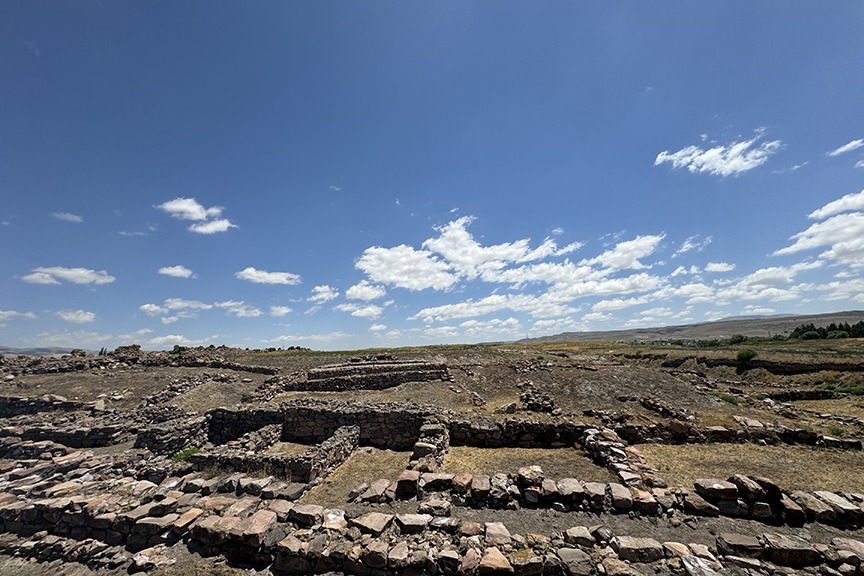

"Archaeologists in Kültepe are investigating traces of the mega-drought believed to have contributed to the fall of the Akkadian Empire. Credit: Anatolian Archaeology."

Unintended Truth
A production by OMGWTF — probably not a real company, but who’s checking?
Also by OMGWTF: WTFNow.uk
View OMGWFT Disclaimer
Expand
Discover
contact@unintendedtruth.com
© 2025 OMGWTF — All errors reserved.
Please consider making a donation so we can continue our investigations
